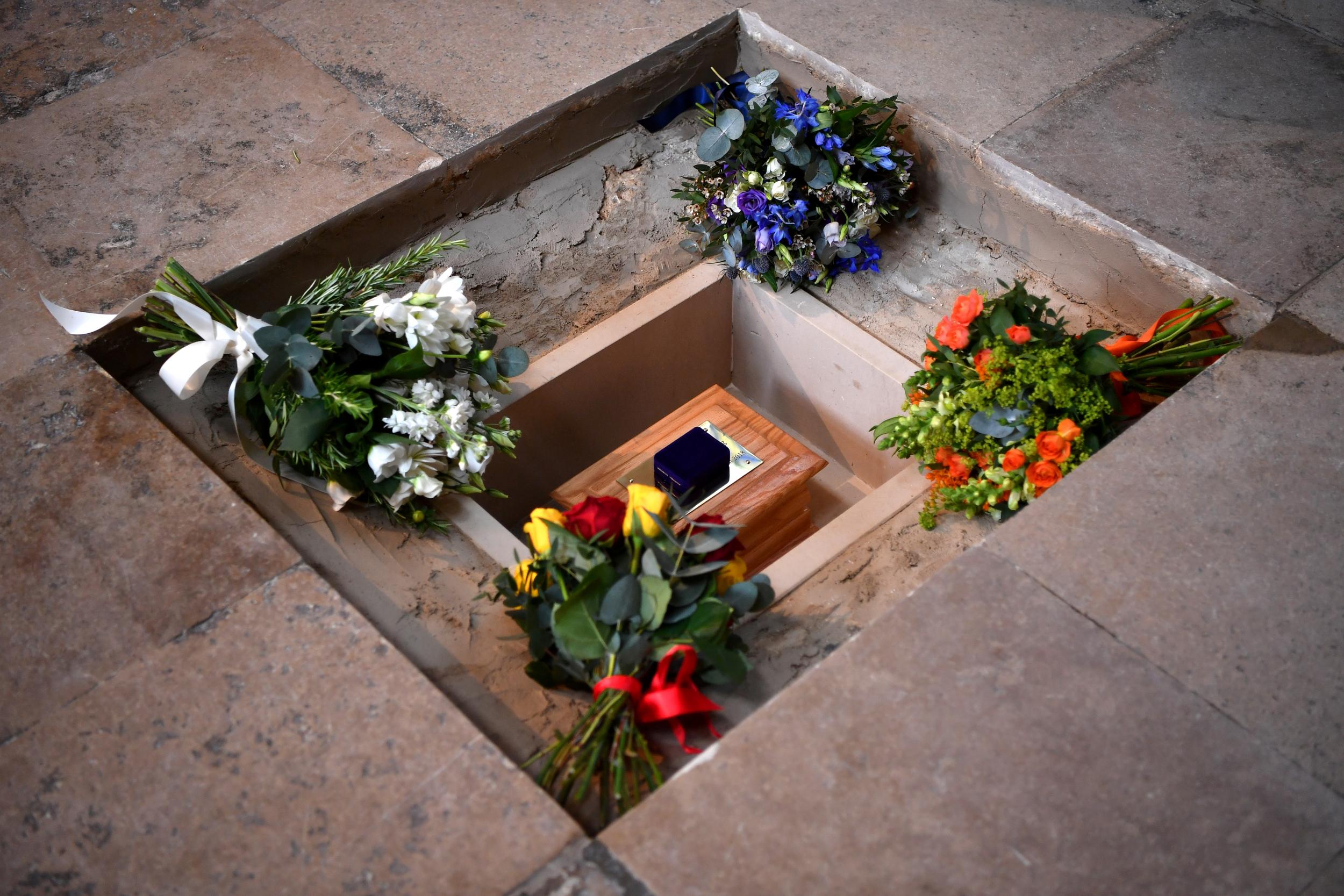Stephen Hawking memorial sees professor's voice beamed into a black hole
'It is a message of peace and hope, about unity and the need for us to live together in harmony on this planet'
Your support helps us to tell the story
From reproductive rights to climate change to Big Tech, The Independent is on the ground when the story is developing. Whether it's investigating the financials of Elon Musk's pro-Trump PAC or producing our latest documentary, 'The A Word', which shines a light on the American women fighting for reproductive rights, we know how important it is to parse out the facts from the messaging.
At such a critical moment in US history, we need reporters on the ground. Your donation allows us to keep sending journalists to speak to both sides of the story.
The Independent is trusted by Americans across the entire political spectrum. And unlike many other quality news outlets, we choose not to lock Americans out of our reporting and analysis with paywalls. We believe quality journalism should be available to everyone, paid for by those who can afford it.
Your support makes all the difference.Stephen Hawking’s voice has been beamed into a black hole following the internment of his ashes at Westminster Abbey in London.
The message recorded by the British physicist, which is set to music by Greek composer Vangelis, speaks about the importance of peace and hope.
It was sent by the European Space Agency towards the nearest black hole, 1A 0620-00, which lies in a binary system with a fairly ordinary orange dwarf star, his daughter Lucy Hawking said in a statement.
“It is a message of peace and hope, about unity and the need for us to live together in harmony on this planet,” she said.
“This is a beautiful and symbolic gesture that creates a link between our father’s presence on this planet, his wish to go into space and his explorations of the universe in his mind.”
The wheelchair-bound scientist, who died in March aged 76 after a lifetime spent probing the origins of the universe and mysteries of black holes, suffered from motor neurone disease which forced him to use an electronic voice synthesiser.
His ashes were interred between major British scientific figures Isaac Newton and Charles Darwin at the abbey, a 1,000-year-old location made famous worldwide for generations of royal coronations, weddings and funerals.
Interment inside the abbey is a rarely bestowed honour: the most recent burials of scientists there were those of Ernest Rutherford, a pioneer of nuclear physics, in 1937, and of Joseph John Thomson, who discovered electrons, in 1940.
Members of the public from over 100 countries, selected by a ballot, joined friends and family for the service which included a reading from actor Benedict Cumberbatch, who played Hawking in a 2004 BBC film, and astronaut Tim Peake.
An address was given by Astronomer Royal Martin Rees, while Hawking’s collaborator and Nobel prize winner Kip Thorne also gave a tribute.
In his address, Lord Rees said: “He shared Darwin’s agnosticism, but it is fitting that he too should be interred in this national shrine.
“His name will live in the annals of science. Nobody else since Einstein has done more to deepen our understanding of space and time.
“Millions have had their horizons widened by his books and lectures, and even more worldwide have been inspired by a unique example of achievement against all the odds.”
The service was also attended by guests from the worlds of showbusiness, science and politics, evidencing how the physicist bridged the gap between academia and popular culture.
The actors Lily Cole and Ben Miller, TV presenters Piers Morgan and Carol Vorderman were present, as well as the science minister, Sam Gyimah and culture minister Matt Hancock.

Around 25,000 people applied to attend the Service of Thanksgiving, according to the Hawking family.
A memorial stone will be put in place atop the spot where he will be buried in Scientists’ Corner with the inscription: “Here lies what was mortal of Stephen Hawking 1942 – 2018.”
The dark memorial stone, designed by artist John Maine, is made from Caithness slate from the north of Scotland and was chosen to represent deep space.
It is also inscribed with one of Hawking’s famous black hole equations, hovering over a series of rings.
In March, a private funeral service was held for Hawking in Cambridge.
Thousands lined the streets and Eddie Redmayne, who played Hawking in The Theory of Everything (2014), gave a reading during a service at the University Church of St Mary the Great.
The professor died at his home in Cambridge on 14 March, aged 76.
He defied all odds after he was diagnosed with a rare form of motor neurone disease aged just 22 and given just a few years to live.
The illness left him wheelchair-bound and dependant on a computerised voice system for communication.
Hawking went on to become a towering figure in the world of physics, a bestselling author with his book A Brief History Of Time and a TV celebrity, as well as a father of three.
Additional reporting by agencies

Join our commenting forum
Join thought-provoking conversations, follow other Independent readers and see their replies
Comments